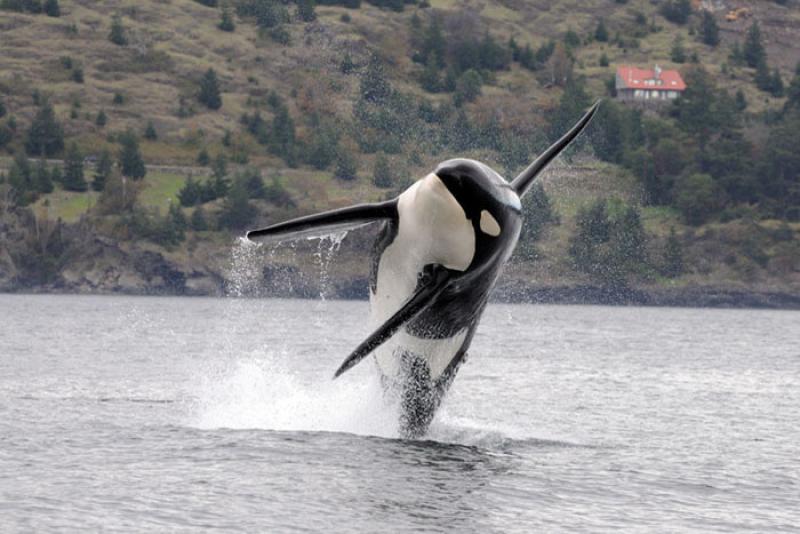It was forty years ago this month that the Endangered Species Act became law. That Act is a complicated piece of legislation, but what it boils down to is this: if a species is at the brink of extinction, or near it, we have to work to pull it back. And it doesn't have to be an entire species. If there's a distinct population within a species that's at risk of disappearing, the law applies to them as well.
Today's podcast is about the small population of killer whales that spends every summer around the San Juan Islands north of Seattle. They go there to feed on the runs of returning salmon that funnel through every year like clockwork. Unlike many other populations of killer whales that eat seals and other mammals, these ones only eat fish, and mostly salmon. Unfortunately for them, the salmon runs are just a fraction of the size they used to be.
These animals are called Southern Resident killer whales, and they're a highly endangered population. Unfortunately, their numbers are not rebounding, and scientists are working to figure out why.
Today we have Candice Emmons on the line. Emmons is a research biologist at NOAA’s Northwest Fisheries Science Center in Seattle, and she works with Southern Resident Killer Whales. We also have Lynne Barre on the line. Barre oversees NOAA's recovery plan for these whales. The two of them talk about the threats the Southern Residents are facing, and how new scientific information might help us help the killer whales to recover.
Learn More



